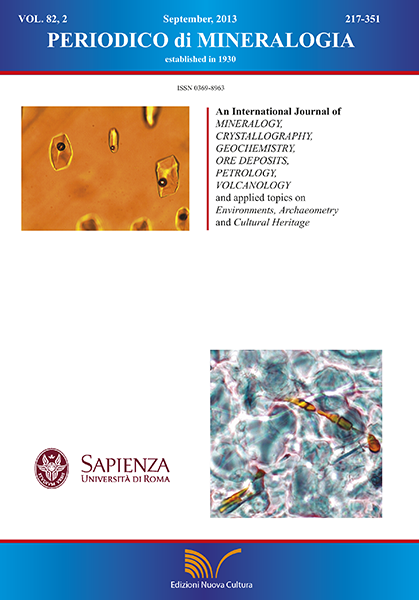Investigation on the gemological, physical and compositional properties of some opals from Slovakia ("Hungarian" opals)
DOI:
https://doi.org/10.2451/2013PM0015Keywords:
Hungarian opals, hyalite, IR spectroscopy, Raman spectroscopy, trace elements, XRPD, AvaSpec-2048 spectrometerAbstract
The physical and compositional properties of some “Hungarian” opals have been investigated through several methodologies such as optical analysis, specific gravity, refractive indices, AvaSpec spectroscopy, XRPD, IR and Raman spectroscopy, LA-ICP-MS. The “Hungarian” opal deposits, now in Slovakia, represented the largest and most significant gem opal deposits in Europe from the Roman Times to XIXth century. The analysed opals include brown semiopals, white opals and hyalite. In general, chromophore elements like V, Cr, Cu, Ti, Co are present in very low concentrations and do not influence the physical properties of the opals. Elements like Na, Mg, Al, K, Ca, Sc, Cr and Fe have been detected, in variable amounts, in all the investigated samples. The semiopals can be used as ornamental and semiprecious material, are mostly made up by CT opal close to pure tridymite and lower amounts of goethite, show high trace elements contents while the REE pattern show a clear Eu negative anomaly. These opals probably formed during an hydrothermal, or late magmatic stage. The white opals are made up by amorphous opal (A), show appreciable play of color and iridescence and are surely the most relevant for gemological purposes. The most pure white opals show low contents of trace elements and a rather homogeneous composition, that can be used as geographical marker. Conversely some opals affected by contamination from host rocks show much higher trace element contents. White opals probably formed during a low temperature tectonic event. The samples of hyalite are yellowish, opaque and greasy. They are made up by CT opal show relevant content of B and As while the other trace element are quite low, and are probably of volcanic origin.


